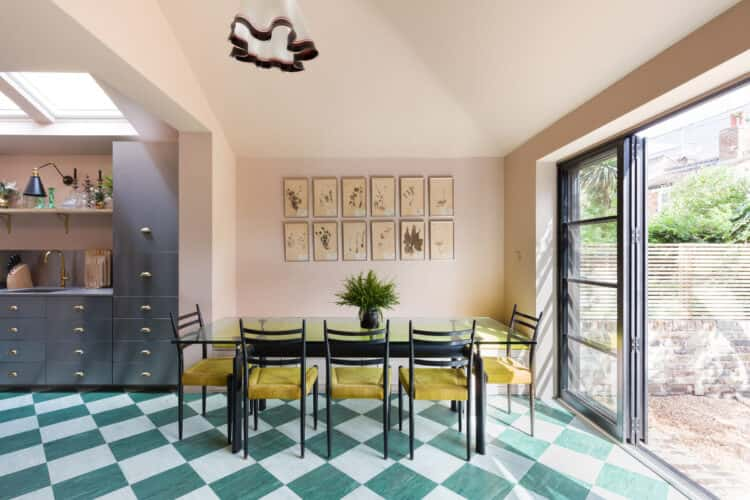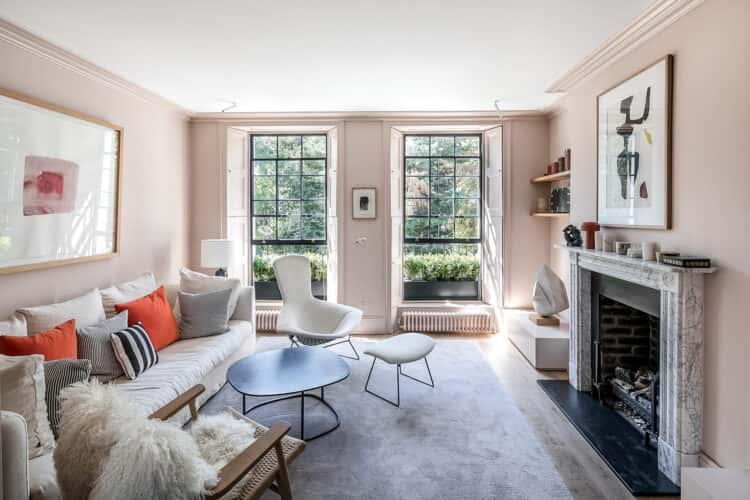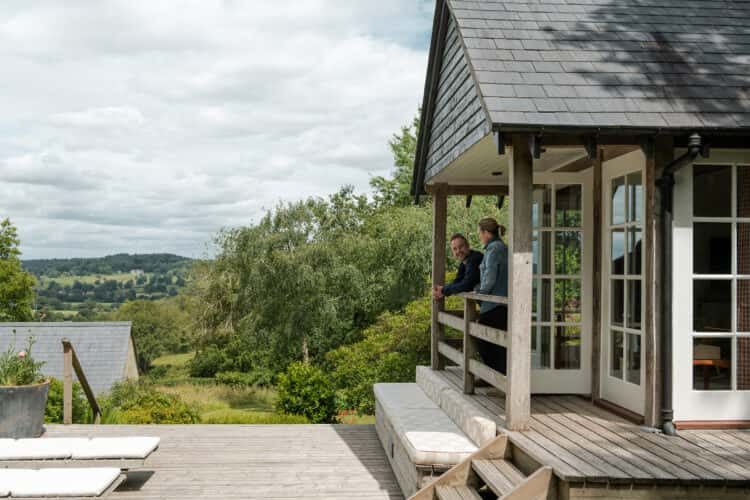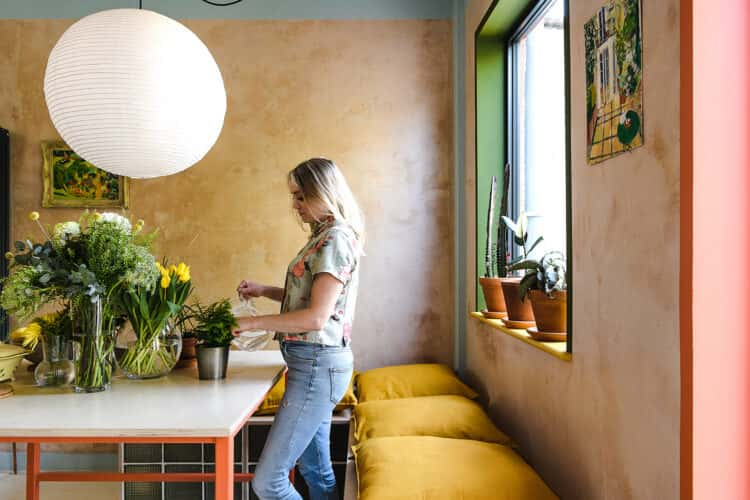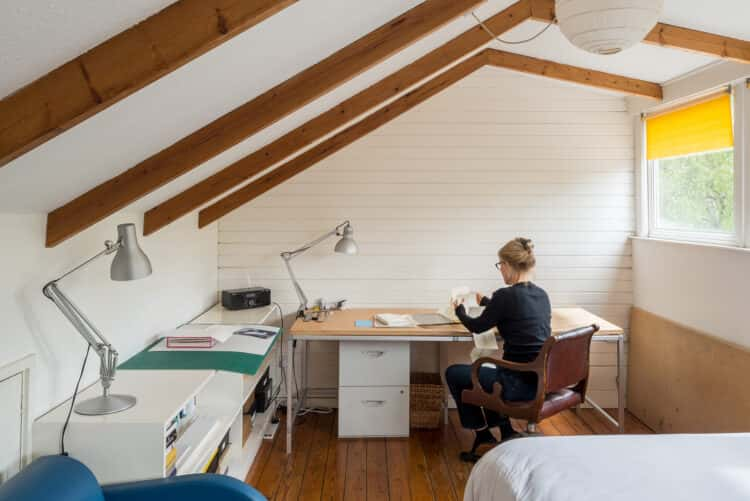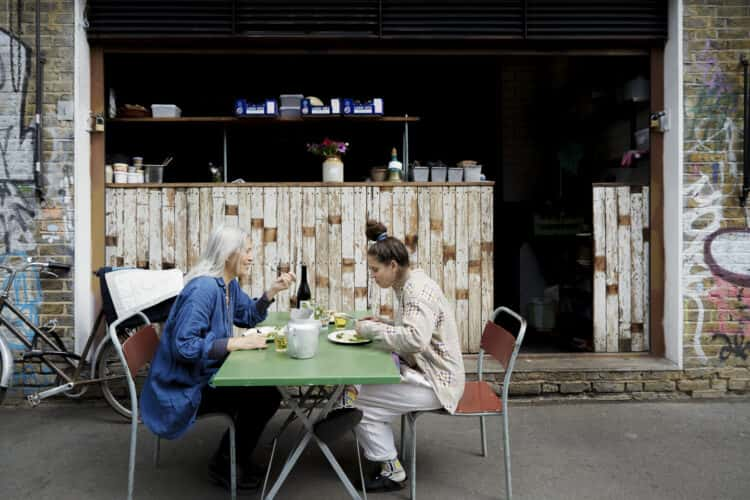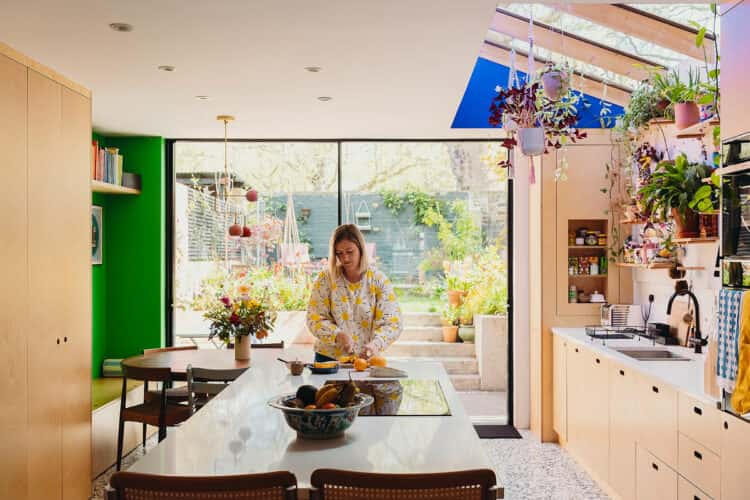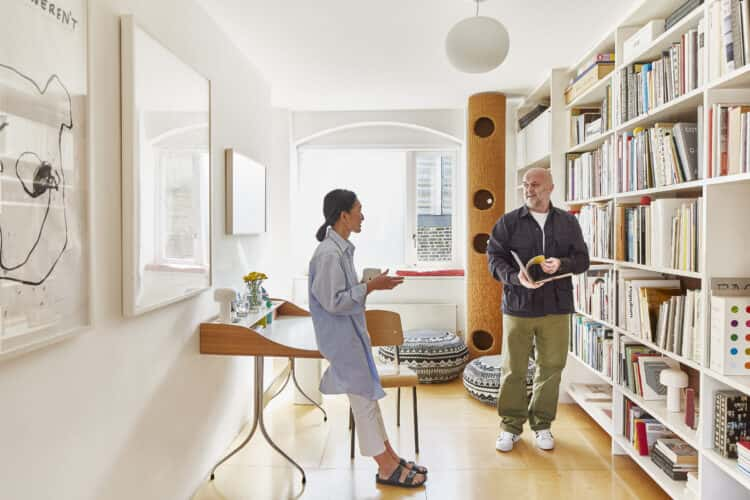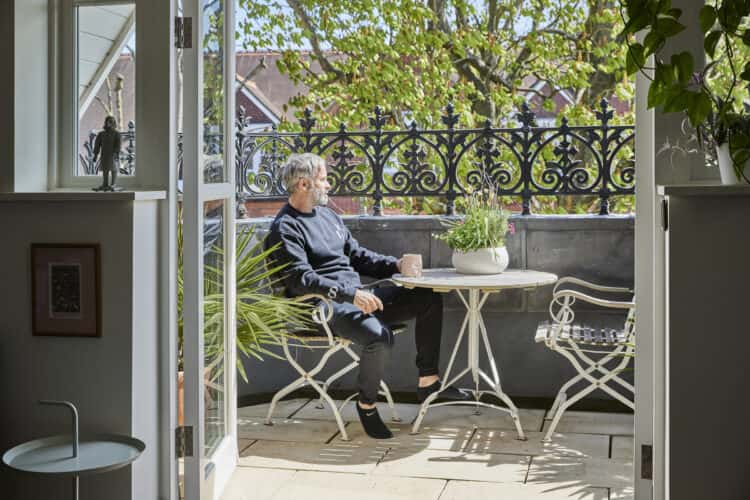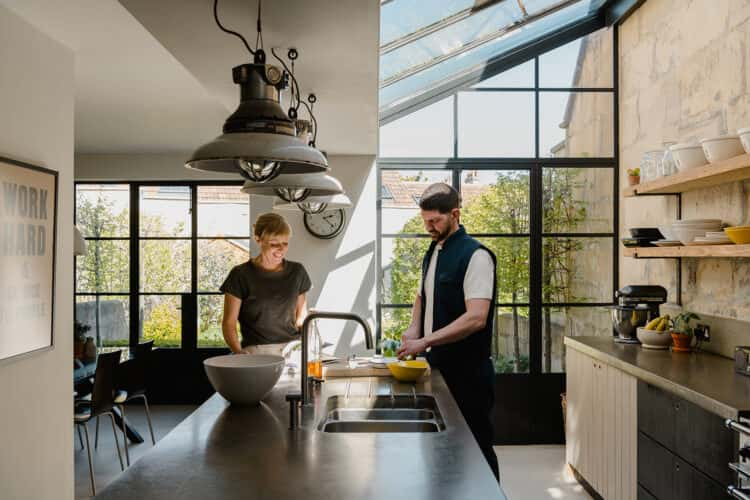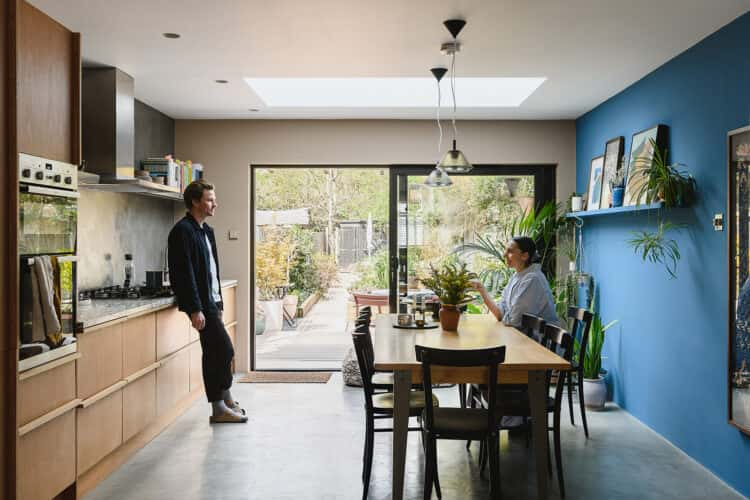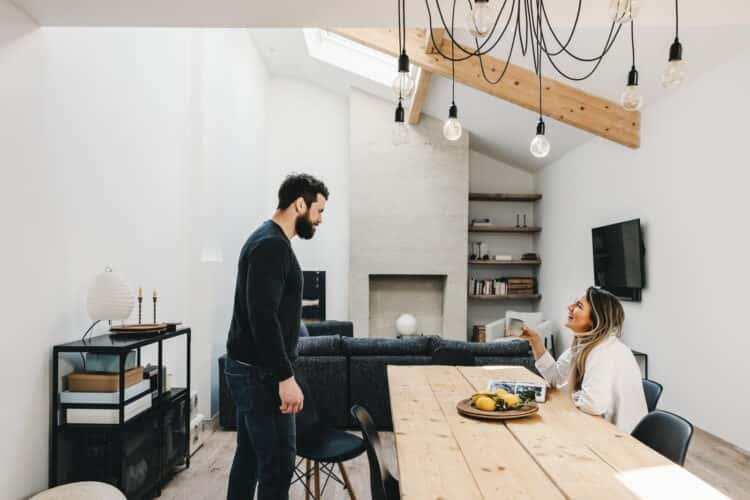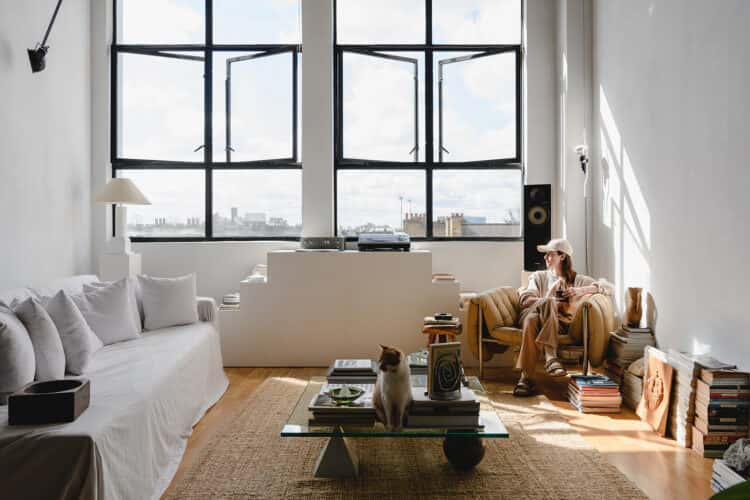Open House: Actress, director and writer Daisy Lewis on reviving an unloved Victorian terrace in Bethnal Green, east London
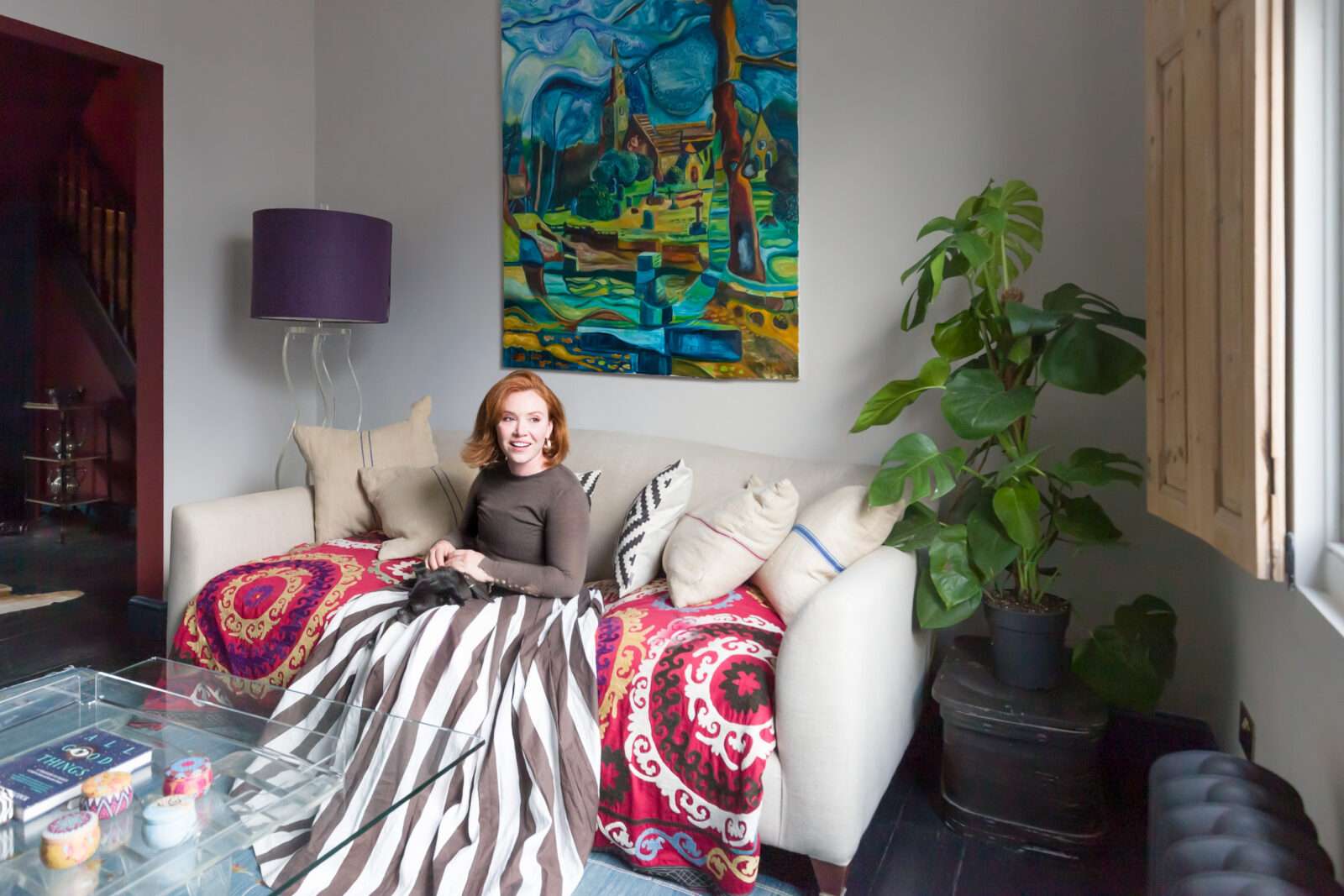
Daisy: “Before I bought this house, I lived out of a suitcase really. I’m a bit of a commitment phobe when it comes to living circumstances, which I think goes hand in hand with being a creative.
“I grew up in Dorset and when I moved to London, I’d stay with friends, often actors and artists, in the East End. I’ve always loved this part of London – it feels like my tribe is here. I always think that if Peter Pan was in his thirties, this is the part of London he’d live in. I rented a flat in Columbia Road for a bit, before moving to America for work.
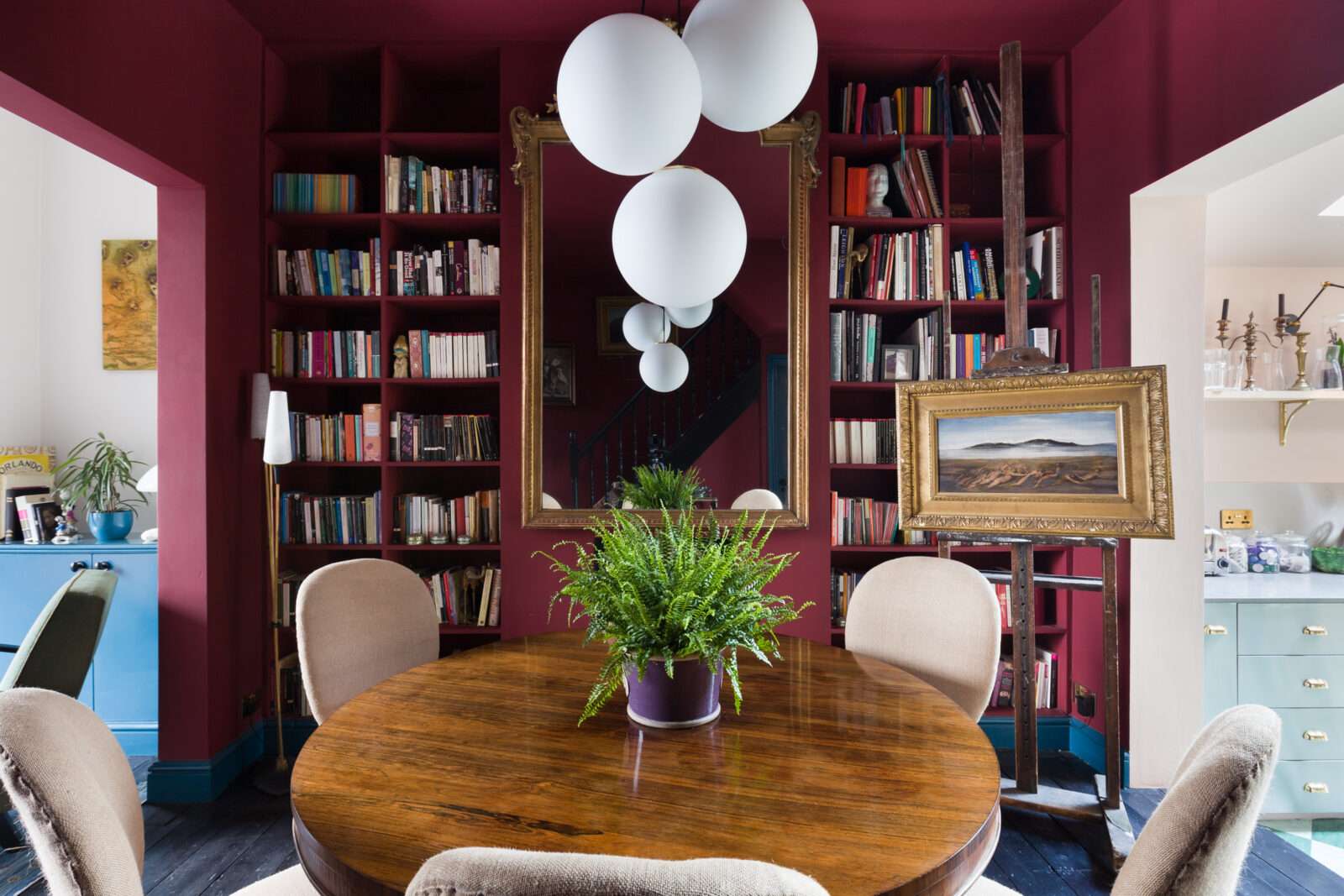
“When I came across this house in Bethnal Green five years ago, I was living in America. My friend, the artist Philip Colbert, pointed it out to me. It was built in 1836 and is part of a row of terraced houses that used to be called Charles Terrace, although it now sits on Roman Road, right next to Victoria Park. I fell for the area really – it’s home to one of the oldest pie and mash shops and the market is amazing. I loved that it wasn’t totally yuppified and had some of the charm of the original East End.
“The big question I asked myself when looking for somewhere to buy was, “who am I, how do I want to live and does the area represent that?” It was crucial for me to be around art and artists, and this area is right at the centre of that for me. My friend, the artist Henry Hudson, lives just down the street, and for me, the key to modern living is to find places that match the stage of life that you’re at. It was also just a 30-minute commute into the West End, which was ideal for work.
“The house itself was deeply unloved, but the bones of it were great, with double height ceilings. The front of it was covered in a mad combination of pebble dash and crazy paving and it had five bedrooms upstairs, but the only bathroom was in the kitchen. Historically, these Victorian houses only had outdoor loos. It still had beautiful original features, although they were in need of a lot of restoration.
“I bought it at auction. I’m one of those people who never does things by half, although I didn’t get to work straight away, as I had to save up. It was a very long process, as it was a complete gut job. I remember right at the beginning of the work sleeping on a blow up mattress with no windows and thinking “what have you done?” It was tough.
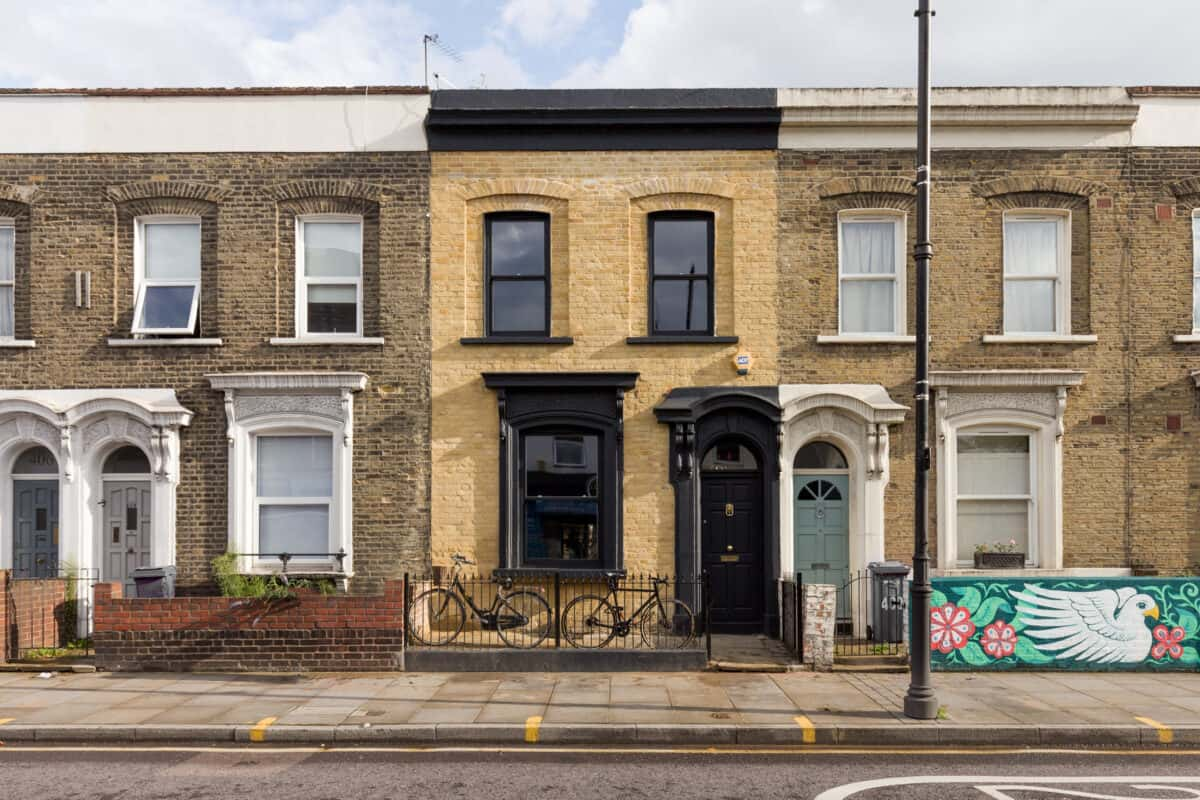
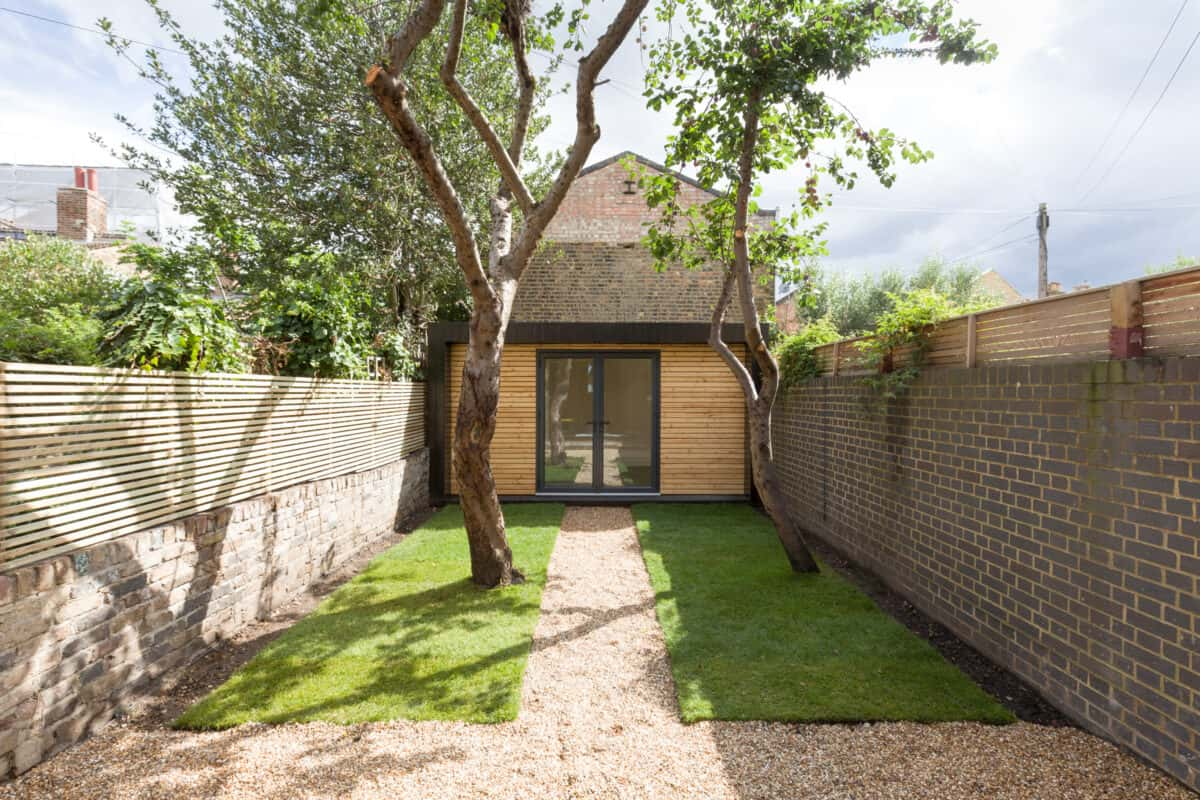
“I brought in the architect Jack Cruickshank, who was brilliant at finding the best way to make it modern, but also preserve its character. We painted the original floorboards and kept the Victorian staircase, but we changed the internal layout, adding a bathroom upstairs and converting the five bedrooms into three generous ones. We added a big extension on the back, which houses the kitchen-dining area, a little utility room and a shower room. The house isn’t listed, but it is in the Medway Conservation Area. Jack had worked on a lot of period buildings and had plenty of experience of how to make modern additions to them without them jarring. I loved working with him.
“I sourced and installed reclaimed shutters, as well as replacing all of the plastic windows with wooden sash ones. The front of the house was a huge part of the restoration, as we had to get rid of the crazy paving. The natural brick colour in the Medway Conservation Area is a pale yellow, so I chose, on the advice of my honorary godfather Jasper Conran, a dark charcoal grey, which was in keeping with the Victorian roots of the house. I’m a big fan of contrast and the colours really work together.
“The studio at the bottom of the garden is probably the most modern part of the house, made from larch with a black frame. It was a lockdown project, as I was stuck in the house writing and I found that I needed somewhere separate to go. Even if it’s just a short walk across the garden to get there, it’s a good change of scene. I re-landscaped the garden to accommodate the studio, but we kept the pair of mature plum trees. To have fresh plums, a garden that’s large enough to accommodate a studio and be just half an hour away from Soho is really amazing.
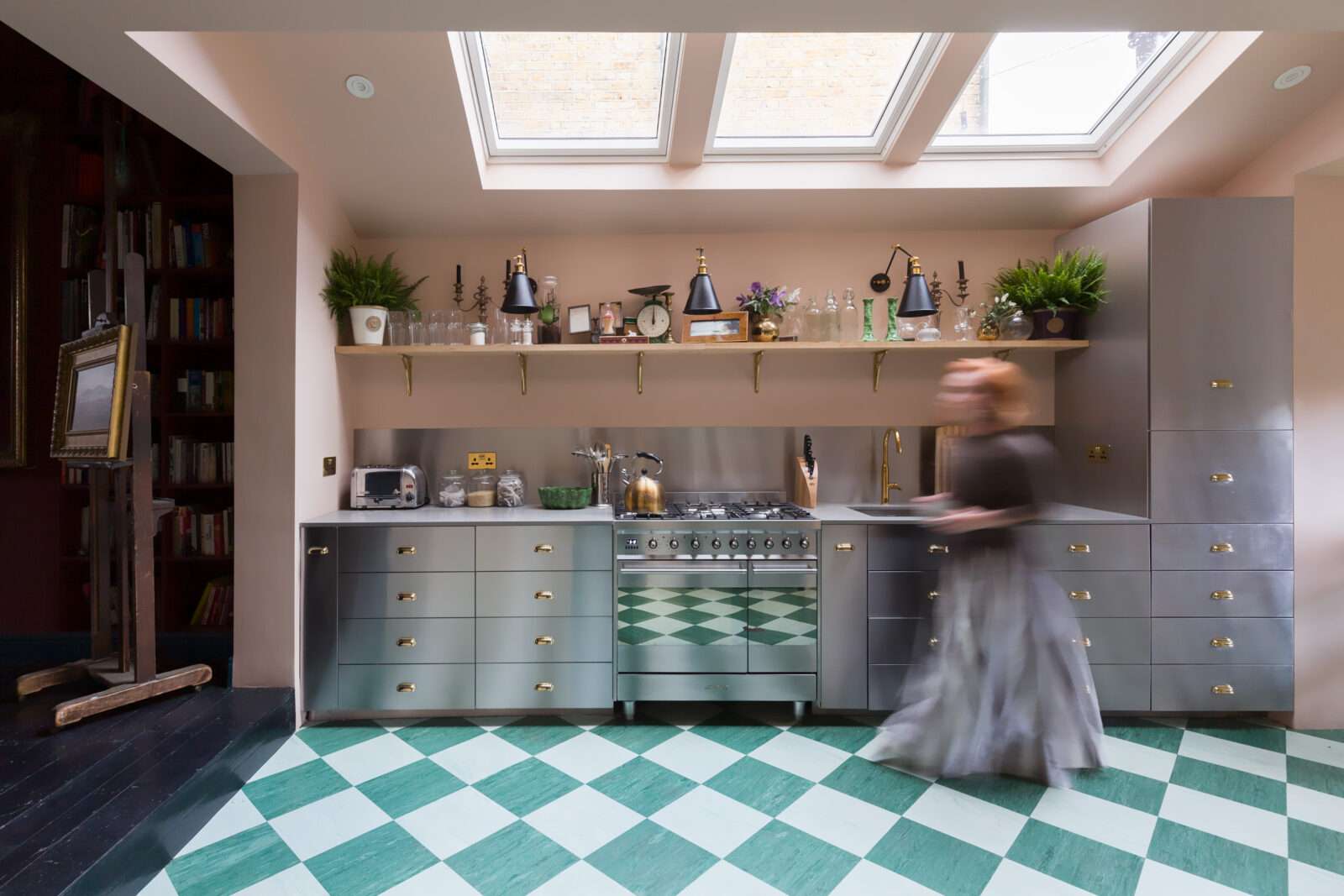
“I wanted a lot of colour throughout the house, but decided on quite traditional shades. The colours help create flow through the space, taking you from the pale living room at the front through to the dark red dining room and library, and then onto the lighter and paler kitchen, with lots of green as you move into the garden. The green diamond pattern tiles on the kitchen floor were inspired by classic checkerboard style tiles that my grandfather had.
“When I started writing and directing, I found that the colours around me really helped. It was another way to be creative. My friend Tara Craig, an interior designer, helped me choose the red for the dining room. It’s the beating heart of the house, balanced out by the lighter rooms, and it feels quite dramatic when you come down the stairs. The art in this room, like the furniture, is quite traditional, with a painting by the Victorian artist George Frederic Watts.
“I wanted the house, probably because of what I do, to feel quite theatrical. I think that’s partly what the four-poster bed in my bedroom is all about. I’ve wanted one since I was a little girl and somehow it felt like a sign that I’d become a proper adult. Its design is like the house – it has traditional bones, but is presented in a cleaner, more modern way.
“I really don’t like seeing clutter, something which I think is also to do with theatre and illusion. In the bedroom, I extended the chimney breast to fit the width of the bed and it allowed me to put a stack of hidden shelves in to the left of the bed head. It’s where I put all the things I don’t want people to see, like my make up, deodorant and hair dryer. In the kitchen, I did a similar combination, with the open shelving at the top for glassware and the steel units below hiding everything else. What you do and don’t show is the trick of theatre.
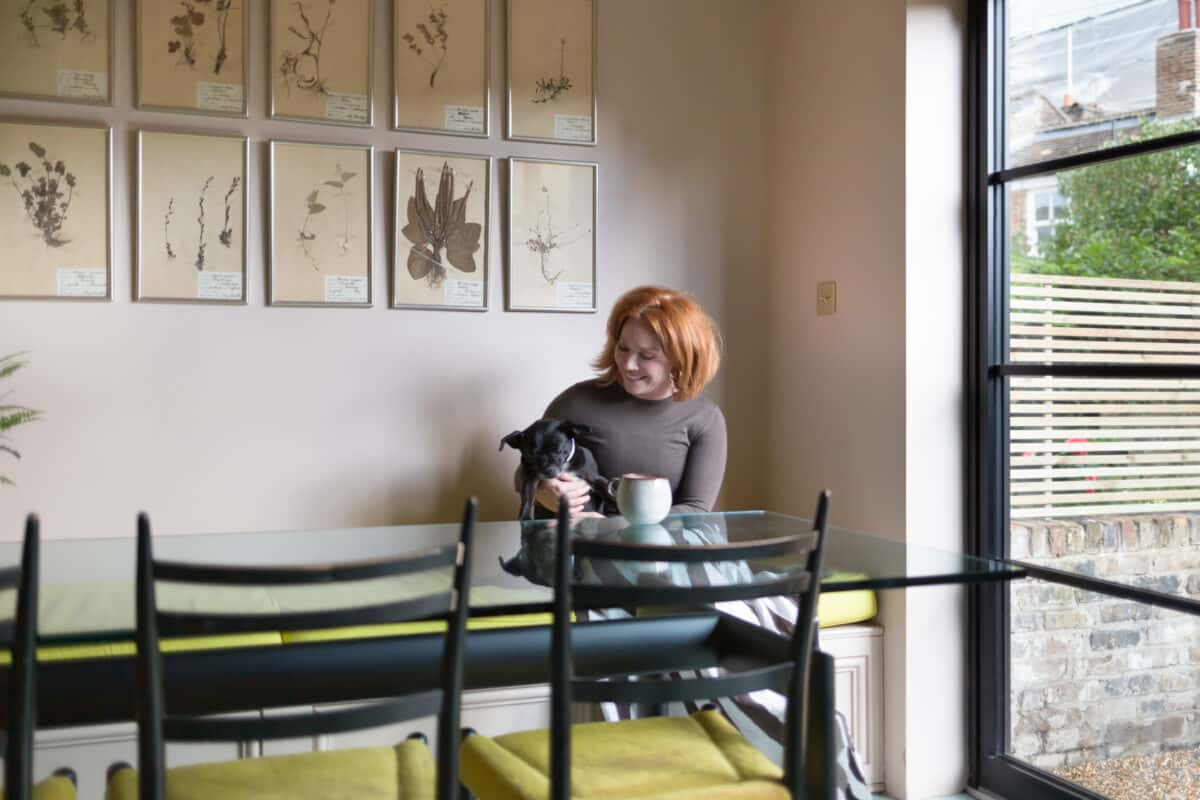
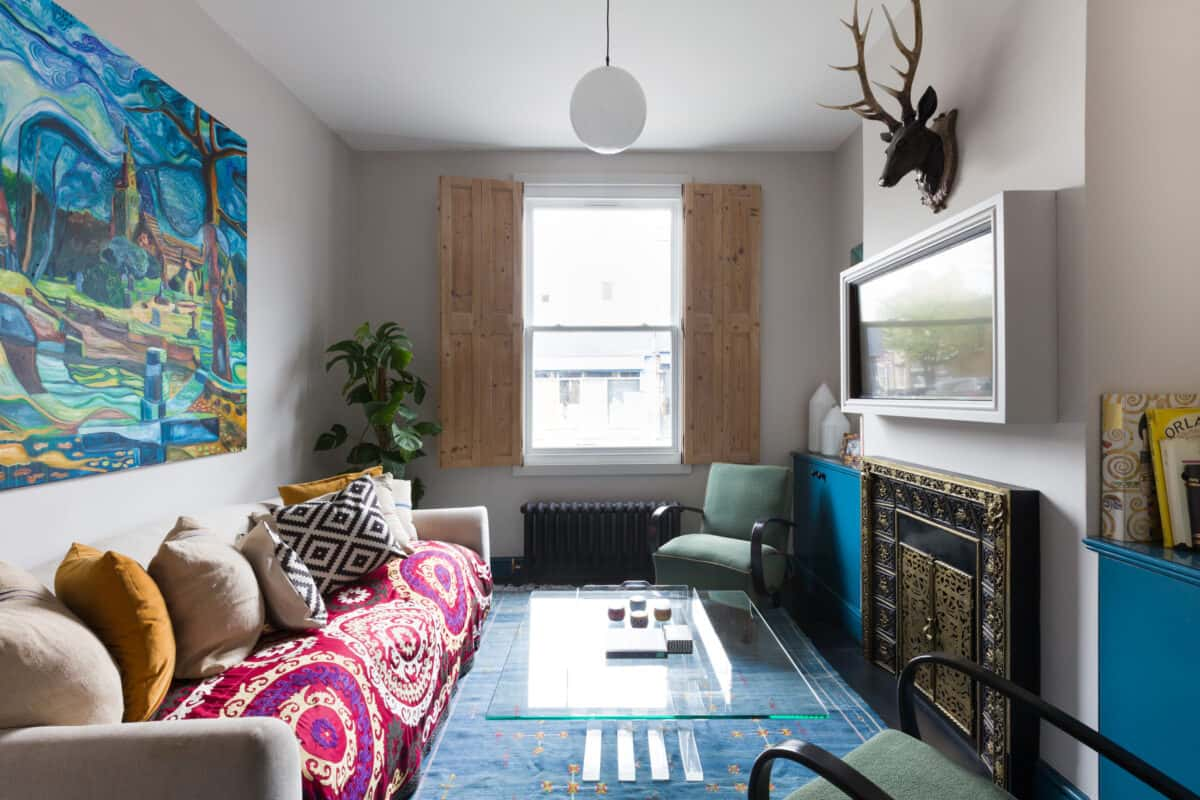
“The living room is definitely one of my favourite rooms. I always tend to start my day in the kitchen and then move to the living room, following the sun.
“Most of the art on the walls is by my friends and people who regularly visit the house, such as the big painting in the living room by Henry Hudson and the two smaller works in there by Gabriel Hartley. I have a rule of always giving at least one dinner a week, as I love to cook. I can fit about 17 people in for dinner because of the two dining tables.
“I’ve had various friends, actors and actresses come and live here over the years. We’re such a transient bunch, who aren’t very good at putting down roots. I was living here by myself over lockdown and I thought “honestly, what are you doing?” I’ve got itchy feet, and Covid has made me realise that I want to be closer to my parents in Dorset. It’s sort of heart-breaking to let go of the house just as I’ve finished it, but it’s not right for the stage of life I’m at. I’m jumping into the void to see where things take me, and I quite like the idea of being a snail, living in different places.”
